![[MetroActive Books]](/gifs/books468.gif)
![[MetroActive Books]](/gifs/books468.gif)
[ Books Index | Metro Santa Cruz | MetroActive Central | Archives ]
Pulp Friction
By Kelly Luker
THEY SERVED UP TANTALIZING tidbits from the Diary of a Geisha Girl. They promised company with Only the Depraved or Torrid Twins or Anybody's Girl where a Strange Bargain was lost or Easy Virtue was found. C'mon down, dollface, and let's take a stroll through literature's trailer park, where old flames, hot dames and come-hither hussies slink and undulate with lust-driven Lotharios and straying hubbies through the pages of sleazy paperbacks, better known as pulp fiction.
Instantly recognizable by their tawdry cover art--often featuring barely clad she-kittens in the throes of lust--pulp fiction has become an icon of a bygone era.
In a decade that has witnessed a nostalgic longing for martinis, lounge music and shag rugs, it is not surprising that these dime store novels from a half-century past have drawn a cult of collectors--and big bucks.
Actually, "pulp fiction" is a misnomer referring to early fiction featured in magazines printed on poor-quality pulpwood paper. Collectors prefer to call those collectable softbounds published between 1938 and 1968 "vintage paperbacks." And although the dramatic cover art--a style co-opted for the movie poster by, of course, Pulp Fiction--is the most recognizable feature of the genre, the sleaze only makes up about a quarter of the vintage paperback market.
Those now-famous authors may add to a paperback's value, but its attraction is more often in the kitschy, exploitative artwork adorning it. Just ask Jeffrey Luther, who has made a living out of reproducing book covers from his collection of almost 18,000 vintage paperbacks.
Lurid drawings combined with tantalizing titles like The Wicked and the Warped, Kiss Me You Fool and I Married a Dead Man have found their way to postcards, T-shirts, greeting cards and, soon, magnets via Luther's Palo Alto business, PC Design. "The artists were extraordinarily underrated," believes Luther, who has worked diligently to track down many of those artists who have long since faded into obscurity. "These people would crank out a painting in eight hours and get a couple of hundred."
Today some of those original paintings can bring $15,000 or more.
Before reproducing the cover art, Luther cleans it up in PhotoShop, though he is quick to point out, "I don't change the look itself." Two things determine if a pulp will end up as a T-shirt or postcard: title and art. Who, for example, could pass up the delicious Men are Such Fools or Naked on Roller Skates?
TO GET TO THE THICK OF THE PLOT, talk to the granddaddy of all paperback collectors, Portland, Oregon's Lance Casebeer. Casebeer was a comic book dealer in the late '60s until it became a "merciless, money-grubbing thing," he says. "When I discovered vintage paperbacks and their lurid covers, I went nuts."
No kidding.
By his own accounting, Casebeer now owns at least one of virtually every vintage paperback printed between 1939 and 1969. He uses his house as a museum for paperbacks and also publishes Collecting Paperbacks?, a newsletter that goes out to about 500 like-minded aficionados.
For all its low-rent reputation, Casebeer would like it noted that the first paperback honors go to none other than Pearl S. Buck's The Good Earth, published in 1938. Before 1945, paperback publishers merely bought reprint rights from the hardback publishers. It wasn't until after WWII that paperback companies could afford to pay for their own writers.
Casebeer serves up volumes of historical minutiae about his love. For example, don't be calling them pocketbooks because Pocketbook is the trademarked name of one the first paperback publishing houses started by George Delacourt (Casebeer adds as an aside that the company published 1,248 titles). Publishers quickly discovered that millions of readers would buy these inexpensive (10 to 25 cents) and easy-to-carry books.
"The concept was aimed at men [because] the paperback reading population was 90 percent male," informs Casebeer. Hence the provocative titles--Swamp Girl, Honey in the Flesh, Wolf Trap Blonde--and the flesh-baring covers. However, Casebeer and other collectors note that what was found between the pages rarely had any relation to the cover. In fact, adds Luther, the same artwork with merely a different title can be found on any number of different books.
Although authors like William Faulkner, Robert Louis Stevenson and Erskine Caldwell even found their works sandwiched between lurid art, most of the content had one other thing in common: "The writing was often forgettable," laughs Luther. And extremely tame.
While Luther loves this vintage era of publishing for its art and marketability, Casebeer sees something a little deeper to it. "It's unique," he says, "It was a historical statement. You can follow the changes in women's rights to 1969, you see the change in interest in male reading and the change in publishing philosophy."
He's right--the cover work provides a fascinating glimpse into the role of women--and the men they attracted--during the Golden Age of paperbacks, from 1939 to 1969. In a word, they were "bad" women. Wily women, scheming women, dangerous women. The men, weak and spineless. No amount of willpower could protect them from the deadly charms of these gorgeous gals. Of course, the poor sap paid, perhaps being framed for murder or some such misfortune.
It is interesting to watch the progression to more hardcore paperbacks, beginning in the mid-'60s. Powerful women, reflected in titles like Hell of a Woman, Tough Doll and Devil's Mistress, were replaced by, well, victims. Captive women were a big sell: Female Convict, Naked Before My Captors, Prisoner of Evil. So were underage girls: The Babysitter, The Lolita Lovers. And rape victims: The Raper.
It is perhaps more than coincidence that women were reduced to captives, little girls and objects of violence between the grainy sheets of paperbacks at the same time they were looking for equal rights in the real world.
CASEBEER AND Luther are part of a growing number of people--usually men--who are joining the cult of paperback aficionados. Matching their passion is local resident Bob Popwell, a retired policeman who now has about 12,000 paperbacks, all neatly encased in plastic sleeves and labeled with detailed information. They line shelves, drawers and cabinets throughout his mobile home, while more hide in boxes under his bed. Thousands of others are carefully categorized in a special shed built out back, sharing space with pots of de-moisture clay to keep the damaging humidity low.
As Popwell proudly shows his collection, happily discussing the details of collecting, he shows little interest in the lurid and the tawdry. Nope, it turns out the retired cop is a big kid who never grew up, a charge to which he laughingly admits. He loves Tarzan and the Phantom and the Shadow just as much as when he first read them 50 years ago.
Popwell is not a "purist," as he shows by his hardbound collection of Edgar Rice Burroughs' works. But it is mostly the paperbacks, covering a whole range of authors and themes, that entrance him.
As in any culture, the paperback collectors have their own lingo. Popwell pulls out examples of "map backs," "Ace doubles" and "Bantam LA's" from his shelves. Like their name implies, the first offer a detailed map on the back cover illustrating where the mystery story takes place.
Ace Publishing offered two novels in the same paperback--no back cover, only two front covers facing each other.
The Bantam LA's are highly sought after, explains Popwell, since only 28 titles were printed. They were designed to be sold in vending machines from bus and train stations for 10 cents each.
Although Popwell owns a fair amount of the "sleaze," as he calls it, he couldn't tell you about the writing. "My wife won't let me read them," he says quickly, glancing at Joyce Popwell, sitting in the alcove reading--what else?--a paperback. Popwell's collection runs more toward Westerns, mysteries, science fiction and, of course, superheroes.
He shows the different ideas that publishers tried out, then discarded, inadvertently creating a collectible. There are the Big Little Books, followed by the Better Little Books. There are paper hardbacks--a weird hybrid between hardback and paper--and then there are paperbacks with dust covers. The latter shows what enterprising publishers would do to push a book.
In Popwell's sample, the original paperback shows a nondescript woman with a so-so title. It didn't sell. So it was returned to the shelves with a dustjacket featuring a little more pout, a little more cleavage and a little less clothing.
It apparently did quite well with the redesign.
VINTAGE PAPERBACKS reflected the era's attitude toward sex and women, yet they also were quick to capitalize on society's prevailing fears and prejudice. Popwell's collection includes World War II-era books with titles like Twelve Chinks and a Woman and Bushido--"A Shocking Exposé of how Mad Japs Mishandle Captive Women and Men!" Never mind how institutionalized racism showed its ugly colors, particularly toward African-Americans.
Besides the taboo political incorrectness about it all, the other thing that makes vintage paperbacks an attractive collectible is their relatively low investment. Although they can fetch hundreds of dollars, the average collector's item, estimates Popwell, will set its buyer back about $20. Perusing through the hefty Official Price Guide to Paperbacks, it appears that many go for much less.
There are dozens of qualities to determine a book's asking price--artwork is merely one part of the mix. How many were printed, the condition of the book, the author and the publishing house are all considered as well.
But talking with Popwell, Casebeer or Luther, one gets the sense that it isn't monetary value that sells them on another book for their collection. Nope, they're men. They're seduced by the wicked temptress that winks from the cover, the red-hot mama that promises untold delights between the covers. Even if those covers are only made of paper.
This page was designed and created by the Boulevards team.
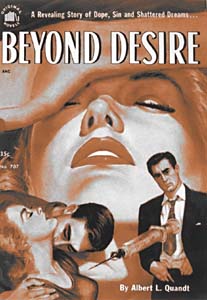 Once considered throwaway trash, combustible dime store novels are now hot collectibles, with cover art fetching thousands of dollars
Once considered throwaway trash, combustible dime store novels are now hot collectibles, with cover art fetching thousands of dollars
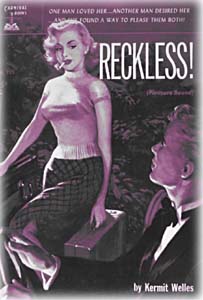 Those penning mysteries and science fiction and tales of cowboys and superheroes all found their way between cheap paper covers. Though many are now long-forgotten hack writers, others writing under pen names like A.A. Fair (Earl Stanley Gardner), Jim Mayo (Louis L'Amour) and Bill Lee (William Burroughs) found a widespread audience through their two-bit novels.
Those penning mysteries and science fiction and tales of cowboys and superheroes all found their way between cheap paper covers. Though many are now long-forgotten hack writers, others writing under pen names like A.A. Fair (Earl Stanley Gardner), Jim Mayo (Louis L'Amour) and Bill Lee (William Burroughs) found a widespread audience through their two-bit novels.
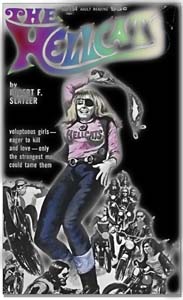 Low-Rent Reputation
Low-Rent Reputation
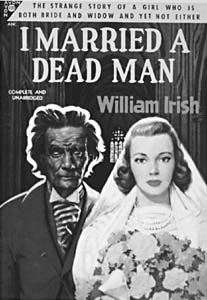 Sex and Prejudice
Sex and Prejudice
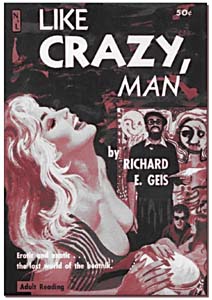 Wicked Temptresses
Wicked Temptresses
From the February 27-March 5, 1997 issue of Metro Santa Cruz
Copyright © 1997 Metro Publishing, Inc.